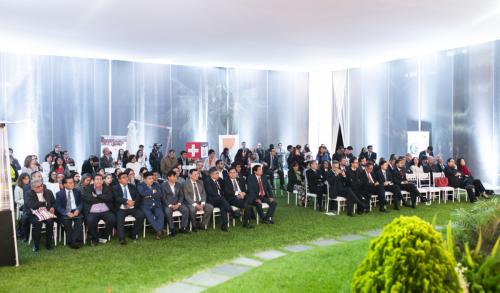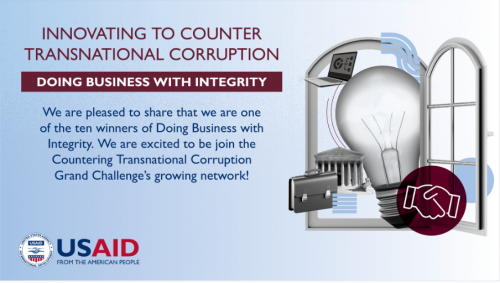Gabriel Cifuentes on the High Level Reporting Mechanism: "Not a vaccine against corruption, but a very useful tool for clean procurement"
In this short video, Gabriel Cifuentes, former Secretary of Transparency in the Office of the President in Colombia, talks about his experience in implementing the second High Level Reporting Mechanism (HLRM) to ensure a clean procurement process for the construction of the Bogotá Metro.
Developed by the Basel Institute on Governance, OECD and Transparency International, the HLRM is a preventive tool that acts as an early warning system in connection with potential corruption. Acting as a complement to institutions and legal systems, it provides an alternative dispute resolution process in high-value procurement and infrastructure projects.
Variations on the HLRM have been implemented in several sectors and the Basel Institute continues to work closely with the OECD to support its adaptation and implementation in countries across Latin America, Central Europe and Asia.
You can find out more in the HLRM resource section of the B20 Collective Action Hub. But first, watch the short video or read the transcript of Gabriel Cifuentes’ recommendations below:
“Colombia was one of the first countries to implement this instrument back in 2015. We had a pilot experience in one of the biggest procurement processes led by the National Infrastructure Agency. Then we had a second implementation of the HLRM in 2018, with the Bogotá Metro project. This was the biggest infrastructure project in Colombia and one of the biggest in Latin America.
On this occasion, we implemented the HLRM with the lessons learned from the experience we had in 2015. I believe these lessons are very useful for the processes that are going on around the world and in other countries.
First, there is no cookie-cutter model of a HLRM. Each HLRM depends on the context in which it is applied - and that means political context, legal context and social context. This is very important because the experiences you may learn from other countries may be useful in part or in full depending on the context in which you are applying this mechanism.
Second, expectations must be managed. The HLRM is not a judicial mechanism. The HLRM is a very useful tool to prevent corruption, but it is not a vaccine. It doesn't absolutely shield corruption cases, which may depend on external variables that affect the procurement or tender process.
Third, the HLRM requires political will at the highest level. In order for it to work, it requires the political commitment to put in place a mechanism or instrument that will be able to raise red flags about possible corruption or situations that may lead to corruption. As you may know, the HLRM is applied in the biggest tenders or procurement processes, in which different interests – political, social and economic interests – may converge or may not converge.
The fourth lesson learned is that this mechanism is very useful to build trust between the parties. Not only between the private actors and public actors, but also between the different private actors that are involved in the procurement and tender process.
Fifth, the mechanism must work very quickly - in real time. If there is a delay in the reception of the information, the processing of the information and providing the necessary recommendation, this mechanism will not work. The HLRM is applied in a very specific part of the procurement process, namely the tender process. If the mechanism doesn't work and is not agile, its purpose will be void.
Lastly, it is important to consider the financing of the HRLM. It may depend on each context, but in my advice, in order for it to be fully independent I would not make it depend on public resources. It should be financed by the budget allocated in the procurement or tender process as such. This budget must be used to hire experts in financial, legal and technical issues.
All in all, the HLRM is a very useful tool to prevent corruption. But it must be managed in terms of expectations and in the faith you put in it. Also, you have to find independent ways to finance it. You have to act very quickly.
And remember: each context is different and each country may find its own way to interpret and implement the HLRM.”
More on the HLRM
- High Level Reporting Mechanism resources and case studies
- New OECD study on how to implement a HLRM for clean, transparent public procurement, a guest article by William Loo and Elisabeth Danon of the OECD Anti-Corruption Division
- Clean procurement in times of covid-19 – transparency and the High Level Reporting Mechanism, by Vanessa Hans



